What does it mean to ride predictably?
I love the nail-biting finish of pro racing, the team tactics, and the incredible speed at which the pros can climb and descend. There’s just something so exciting about a pro-race, especially those sneak attacks! The Peloton is just cruising along when suddenly, a rider will weave through the group and explosively blow off the front of the pack, with other racers scrambling to follow and catch on to the breakaway.
But what works in pro bike racing isn’t necessarily good – or safe- in regular, day-to-day riding. You don’t want to be an exciting, explosive rider in a group ride that sneaks past people; you want to be boring and predictable, no matter what speed you’re riding at – because predictable is safe.
Why Predictability is Important
Most of us will never be pro-racers, and many of us will never even race it all. That doesn’t mean that cycling is any less important to us, but it does mean we may ride a little bit differently. There are some inherent dangers in racing, such as the high speeds, the quick turns, the close quarters, and the attacks. But even pro-racers try to be predictable in their bike handling, which is something that we can all learn and benefit from.
I’ll never forget one of my very first group rides; I was still new and scared to ride in a group. I was also nervous about descending at speed. The cyclist whose wheel I was following suddenly sat up, took his hands off the bars, and snagged a banana from his back pocket while descending. To him, it was an easy time to grab a little grub. But his unpredictable move and speed gave me a bit of a scare, and I hit the brakes. Consequently, I fell off the back of the group I was so precariously hanging onto.
Nothing bad actually happened because of that incident, but it did cement into my head the importance of predictability in a group ride.
Being unpredictable can cause accidents, frighten other riders, upset drivers, and wreak havoc on what should be a fun group ride. Being predictable helps keep you and the people around you safe. It’s probably why – when I first learned to drive – that my dad ingrained in me to be predictable!
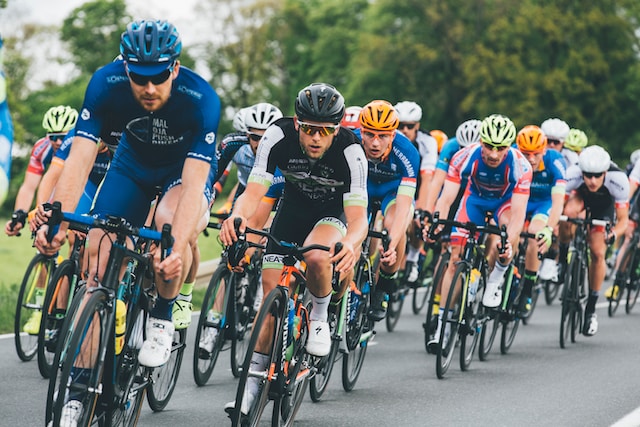
Photo by Markus Spiske on Unsplash
Predictability in a Group Ride
I remember when I was a new rider and terrified to ride in a group. Whenever someone got within three feet of me, I would slam on the brakes or ride off the trail and into the weeds. But after riding with people who are consistent and predictable, I got a lot more comfortable riding close to other riders. And knowing who is predictable is even better! Here are a few ways you can work on being predictable when you ride.
Keep a Consistent Speed
Group riding tends to have a slinky effect. Minor changes in speed or line in the front of the pack get very exaggerated by the time it reaches the back of the pack. The more consistent your speed, the safer and easier it is for everyone to ride in the pack.
If you need to increase your speed, do so slowly rather than speeding up quickly and then slamming on the brakes, which will cause the person behind you to do the same thing. Hold your speed as steadily as possible and make small, smooth changes.
Hold Your Line
Swerving all over the road is a surefire way to cause an accident. When you’re going around a turn, making a curve, or going straight, try to hold your line so you don’t cut off someone behind or next to you. You can practice holding your line by maintaining the same distance from the white line as you ride or turn (keeping an eye out for traffic and hazards, of course).
Watch Ahead for Hazards
Always be looking ahead for hazards rather than staring at the wheel in front of you. If you swerve at the last second to avoid a pothole, you might crash into the person next to you or cause them to swing out into the opposite lane. When you do see a hazard ahead, communicate it so the people behind you know what you will do when you get to it.
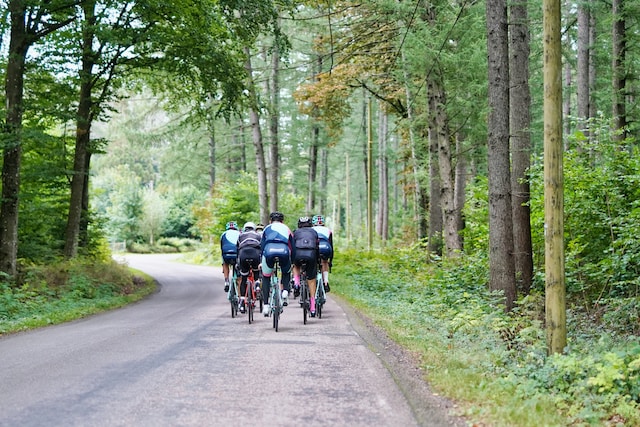
Photo by Martin Magnemyr on Unsplash
Communicate
Communication is critical when you’re riding in a group. You need to let the people around you know if you will change positions, turn, speed up, slow down, or stop. You need to warn them of road hazards or traffic.
Make sure you signal left and right turns.
Pat the air if you’re going to slow down, or put your arm down and to the side if you’re going to stop. Slap your butt to tell the person behind you to follow you around a pothole, and call it out when you see people walking or riding on the road ahead of you. Point out potholes, rough roads, and broken glass, and anything you would want someone to point out to you.
When I’m stopped at a stop sign, I don’t yell “Clear” when it’s safe for me to go because, by the time I get into the intersection, it might not be safe for the person behind me. But I do like to give them a heads up – so I yell out,”ROLLING.” If I see a vehicle, I yell look left or look right, so they can judge for themselves if it is safe to go.
I personally like to use both arm signals and my voice when I’m signaling or stopping.
Remember Who Is Behind You
I’ll never forget the day that someone ran into the back of my wheel. Luckily, they hit me straight on rather than overlapping wheels and causing us to go down. Of course, they apologized, and everything was actually fine – I didn’t even know it happened until they told me.
But it’s a great idea to keep your head on a swivel and watch who is behind you. If their reaction times are slow, you’ll know you need to be extra cautious when slowing and stopping. If they are very reactive, you’ll want to make your movements calm and gentle so you don’t startle them into slamming on their brakes.
I remember what it’s like to feel scared and panicky – my tendency when I was new was to hit the brakes – so be patient with others that are new, too!
If you need to, head to the back of the group and give yourself some space when you’re worried about what’s going on behind you in the pack.
Look Who’s in Front of You
I like to know whose wheel I’m following! Over the past few years, I’ve learned whose wheels I like to follow – and whose wheels I don’t. If I know I’m riding with a steady wheel, I can follow closely and enjoy more of their draught. On the other hand, if I’m following someone who I know is a bit unpredictable, I’ll back off and leave a little extra space, even if it means I get less draught.
If you’re riding in a new group, you’ll probably be able to figure out quickly whose wheel you should stick to – and whose to avoid – if you just watch how predictable they are!
Keep Your Bike Maintained
Having a mechanical in the middle of a pack can cause a pile-up or, at the least, a big scare. Keep your bike maintained and your tire pressure on point to minimize your chances of causing a problem on a ride. A lot of bike shops offer basic maintenance classes if you need help.
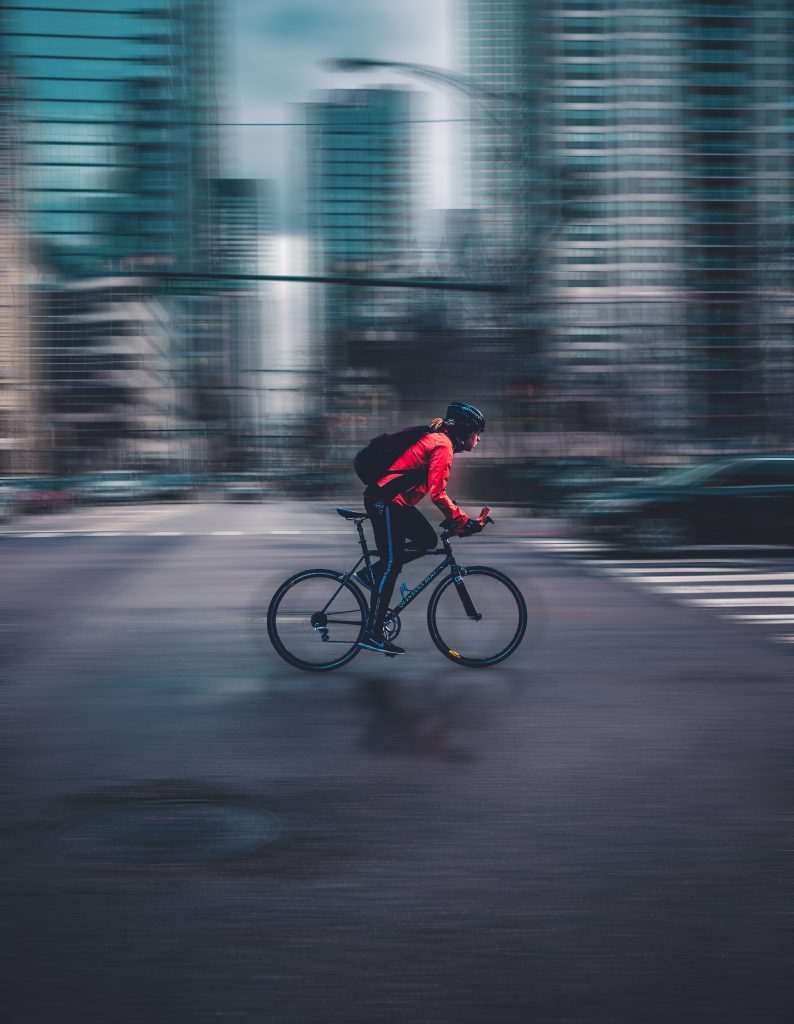
Photo by Max Bender on Unsplash
Predictability in Traffic
While it’s important to be predictable in a group of cyclists, it’s also important to be predictable in traffic. First of all, you don’t want to be a jerk to cars and trucks. They’re way bigger than you, and in a fight between a car and a bike, the bike will always lose.
Follow Traffic Rules
Drivers don’t like it when bikes break the rules they have to follow, and technically, bikes are supposed to obey all traffic rules. That means consistently stopping at stop signs, signaling appropriately, and holding your line. Ride in a way that the driver behind you can anticipate what your next move is. Don’t suddenly swerve into traffic, slam on the brakes, or turn without warning.
Signal
Use your hand signals religiously! If you don’t know them, just Google your state’s bicycle laws, and they’ll come up in the search results. Some cyclists will simply point to the direction they are going to go. Personally, I like to use the old-fashioned hand signals that we learned in our driver’s manual. Point left to go left. Turn your arm down to stop. And turn your left arm up at the elbow to turn right.
The reason I use the left-handed signals is because drivers drive from the left-hand side of the car. If you are pointing with your right hand, they might not be able to see it well from where they are. Signal early and make your motions big for traffic to see.
Hold Your Space but Don’t Hog the Lane
Where I live, cyclists can (but don’t have to) ride on the shoulder if there is one. I find that sometimes we get trapped on the shoulder and then are unable to avoid grates, debris, and broken glass or gravel. I personally like to ride just to the left of the white line, ideally where the right wheel of traffic tracks.
This keeps me far enough to the right that traffic can pass when its safe but helps me be more visible. It also gives me space to move to the right if there is a pothole or a hazard.
Whether you’re in a group or in traffic, hold your lane (usually the right-most lane that is going in the direction you need to go) without hogging the lane or crossing the yellow line.
Predictability on the Trail
There are plenty of trails where I live that you can ride a bike on. These are great to avoid car traffic, but they are often busy with foot and bike traffic. You need to be predictable on the trail just as you would on the road.
Observe the speed limit, and ride consistently. Slow down when you’re approaching, and give plenty of space when you pass people. Don’t terrify Grandma on her e-bike or Mom with her stroller of kids; don’t whiz past joggers or frighten people on their cell phones. Instead, call out a pleasant greeting and let them know which way you are going to pass. You can also use a bell to alert people that you’re coming.
Remember that not everyone on the trail is going to be paying attention to what you’re doing, so the more predictable you are, the safer it is for everyone.
Predictability in Racing
Although there is some unpredictability in racing, good racers will be as predictable as possible within their race. It’s common for track racers to call out where they’re going. They’ll yell ‘stick’ or ‘stay’ to alert the person in front of them that they’re passing and they shouldn’t change lanes. Wag an elbow to let them know you’re coming off the front and point if you’re going to sneak into an opening. Even in racing, nothing replaces predictable bike handling to keep everyone as safe as possible.
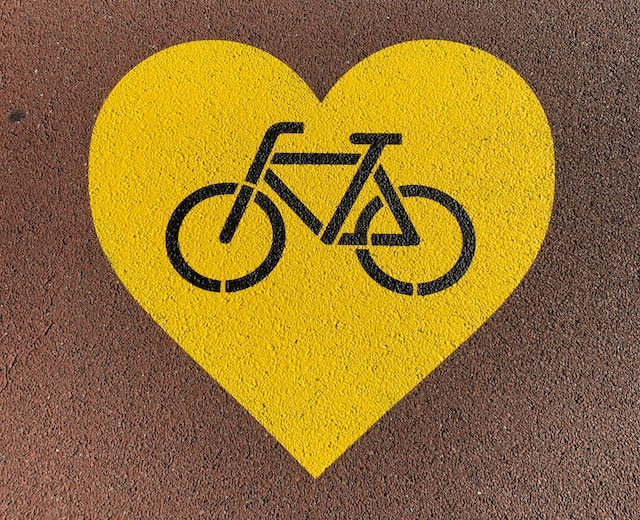
Photo by Nuno Ricardo on Unsplash
How to Ride with People Who Aren’t Predictable
Not everyone you ride with has the same skill set you do. Some people just aren’t as advanced in being predictable – and some people never bother to try.
When I ride with people who are new to group riding, I sometimes like to put a little extra distance between me and them. If they are very unpredictable, I’ll sit off the back of the group a little bit to give myself extra distance in case they stop or swerve suddenly. I can also act as a sweep if someone starts to fall off the back of the group and alert the people in front that we need to ease up.
Alternatively, I’ll sit in the front and take long pulls (the front is always the safest place to be). If someone is acting unsafe, I’ll gently remind them what to do. If needed, slower speeds and putting more distance between you will help you stay safer with people who aren’t as predictable.
Group rides aren’t the time to show off. Instead, use your best group etiquette and be predictable so everyone can have fun and come home safe. These are just my ideas on how to be predictable and safe when I ride. What techniques do you use to stay safe on the road?
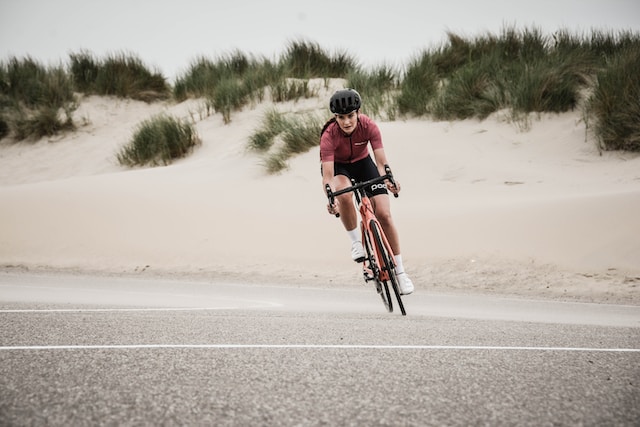
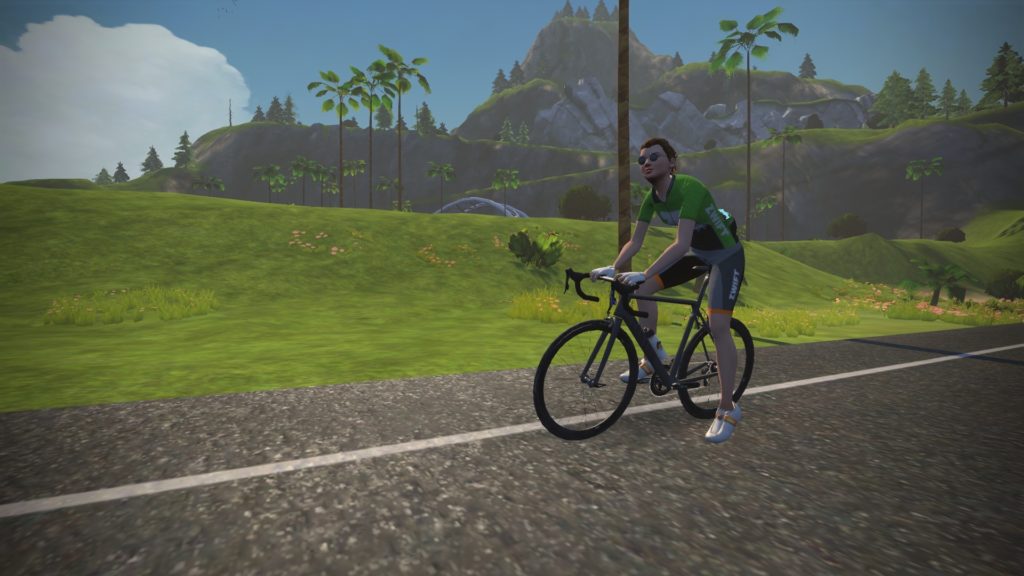
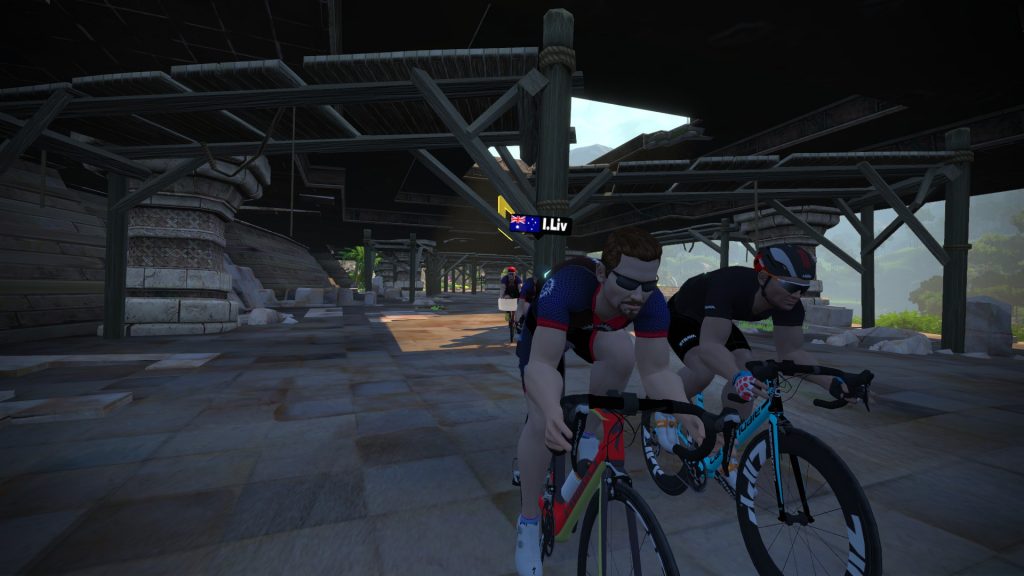
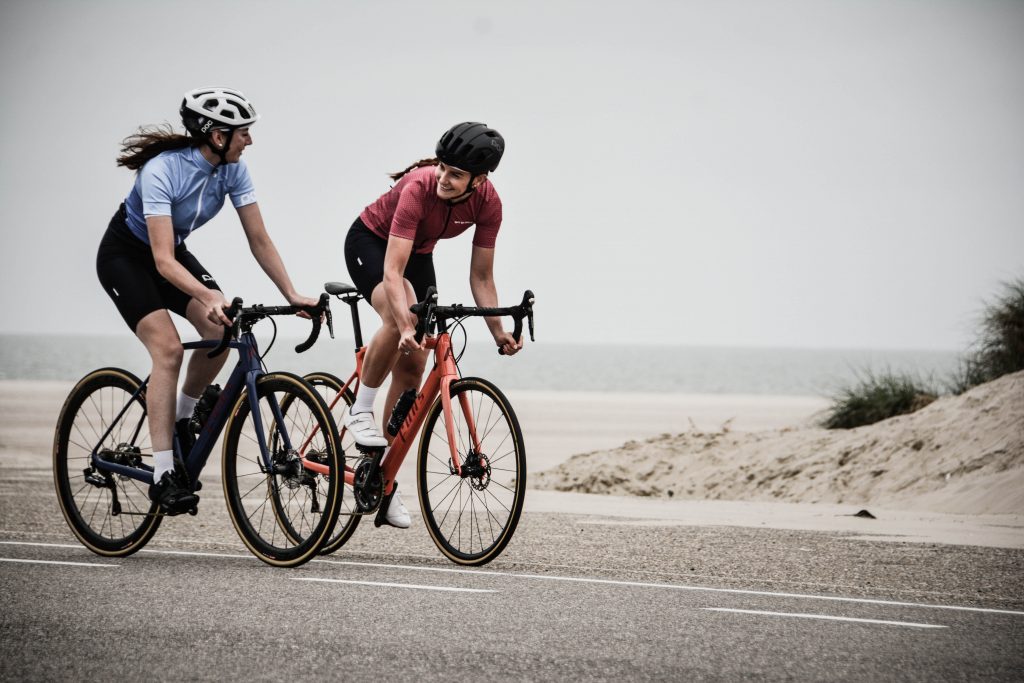
Leave a Reply